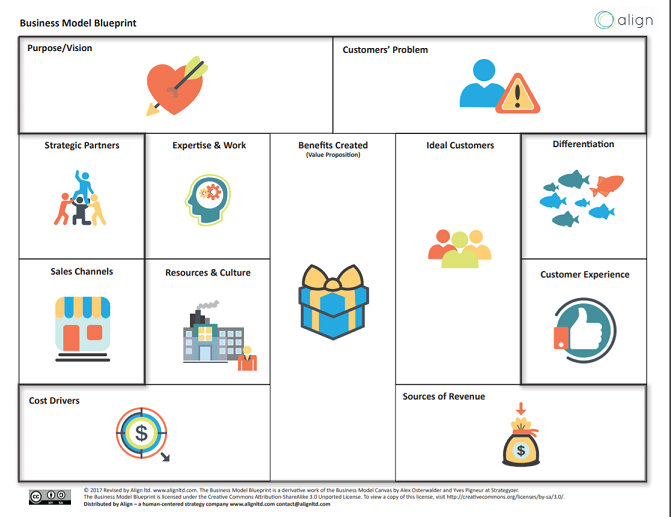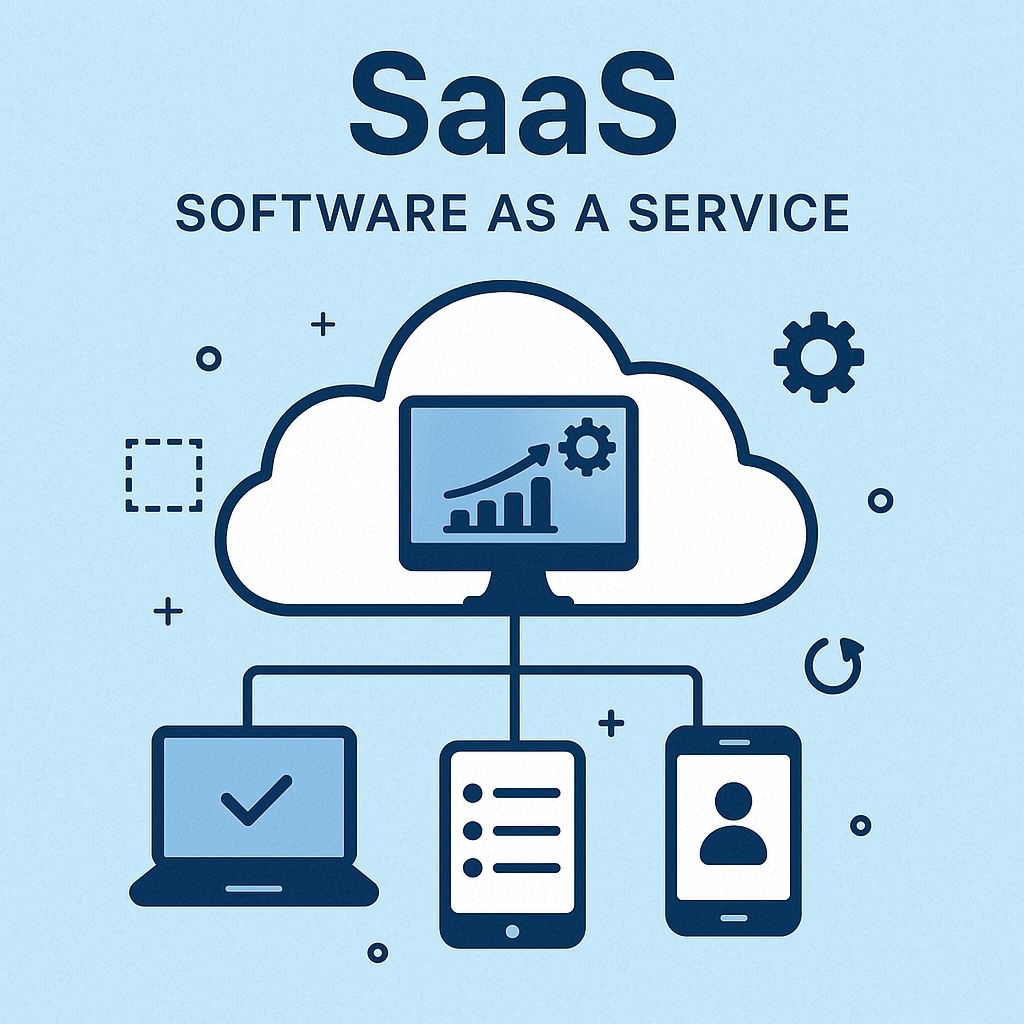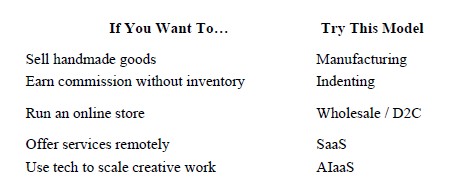Business Models
Updated Version: “Business Models for Women that work in line with the new world”
Business Models for women are basically the same as those for men, however, based on mobility issues there can be some variations to take into account.
A business model is the way a business generates income. It defines how you offer your product or service and how you earn from it. For example, a home-based clothing brand may earn through direct sales online, while a beauty professional might offer appointment-based services or run a salon.
As a woman looking to start or grow a business, especially from home or in a flexible way, understanding different models can help you choose the one that fits your skills, goals, and lifestyle.

Source: An interesting and simple blue print by Alignltd
Business Models - Types
There are several proven business models that women can explore when starting or re-entering professional life. Some are traditional, while others are digital-first—but many can be adapted to work well in today’s connected, flexible world.
Here are five business models—some classic, some that work especially well in this new-age, tech-driven economy:
- Manufacturing / Product-Based
- Indenting / Agent Model
- Wholesale & Distribution
- SaaS (Software as a Service)
- AIaaS (AI as a Service)
You can begin with one model—or blend elements of multiple—to suit your skillset, lifestyle, and income goals.
1. Manufacturing Model
The manufacturing model involves creating physical products—like clothing, home decor, food items, or handmade crafts. It may start from home or scale into small units.
Ideal for: Women skilled in sewing, baking, craftwork, or product design.
Example: A woman in Lahore designs abayas and sells them on Instagram or Daraz.
Modern Tip: Use SaaS tools like Canva for branding and WhatsApp Business for customer orders.
How it Works
Manufacturing involves creating and selling your own physical products—like food items, clothing, crafts, candles, or skincare. You can start small from home and scale into a workshop or small production unit.
🔹 Steps Involved
- Choose a product you’re skilled at making or designing
- Source raw materials at wholesale rates
- Create your products (handmade or through small-scale manufacturing)
- Package and brand your items
- Sell online via WhatsApp, Instagram, Daraz, or exhibitions
- Fulfill orders and collect payments
🔹 Earnings & Setup Needs
- Moderate capital to purchase materials and packaging
- Strong control over quality and branding
- Ideal for women with skills in sewing, baking, crafts, etc.
- Can grow from home-based to a formal small business
2. Indenting / Agent Model
In the indenting model, you work as an agent or middle-woman—connecting buyers and sellers and earning commission on successful orders.
Ideal for: Women with strong networking, sourcing, or negotiation skills.
Example: A woman in Multan connects international buyers to textile manufacturers in Pakistan.
Modern Tip: Use email, Google Drive, and Zoom to work remotely and communicate professionally.
How it Works
Indenting involves acting as an agent between buyers and sellers, sourcing goods on behalf of a buyer based on specific requirements.
- The indenter connects buyers with suppliers or manufacturers who meet the buyer's requirements.
- The goal is to find the best balance of quality and price, and ensure smooth delivery and communication.
🔹 Steps Involved
- Receive product specifications and requirements from the buyer
- Contact multiple suppliers to get competitive quotes and timelines
- Negotiate rates and finalize vendor
- Ensure the manufacturer produces as per instructions
- Arrange inspections (if required)
- Send production samples to the buyer
- Oversee shipment and delivery
- Earn commission (usually built into the product price)
🔹 Optional: Working as a Buying House
- A buying house acts as a more involved agent, often handling production oversight, quality control, and communication with multiple manufacturers.
- Especially relevant for international clients or complex products like garments or home textiles.
🔹 Commission & Earnings
- Commissions typically range from 0.5%–2% for bulk items and up to 5%–7% for value-added goods.
- Payments may come from the buyer, the seller, or both.
- This model requires little capital, no inventory, and can be operated from home.
3. Wholesale & Distribution Model
This model involves buying products in bulk and reselling them to retailers or directly to consumers.
Ideal for: Women who can invest in inventory, storage, and marketing.
Example: A woman in Islamabad buys imported skincare products and distributes them to local salons.
Modern Tip: Use Meta Business Suite or TikTok to market products directly to customers.
How it Works
The wholesale model involves purchasing goods in large quantities and reselling them at a profit, often through a network of retailers.
- Wholesalers buy products in bulk at lower prices and resell them to retailers, service providers, or end-users at a markup.
- It’s a volume-driven business, ideal for those who can manage logistics and sales.
🔹 Steps Involved
- Identify high-demand products
- Buy in bulk from manufacturers, importers, or local producers
- Store inventory (in your home, a warehouse, or storage facility)
- Build a network of retailers or distributors
- Market the product via WhatsApp, Facebook, or in-person visits
- Deliver goods and collect payments
- Offer discounts for early payment to keep the trade cycle healthy
🔹 Scaling Through Distributors
- Wholesalers often appoint distributors who handle delivery to smaller retailers.
- This allows faster expansion across neighborhoods or cities.
🔹 Earnings & Capital Needs
- Requires more capital than other models due to bulk buying and storage needs.
- Offers strong profit margins if managed well.
- Risk lies in slow-moving inventory or delayed payments, which can impact cash flow.
4. SaaS (Software as a Service) Model

New Addition (Modern Model):
SaaS refers to online platforms that offer tools or services on a subscription basis. You can either use SaaS to run your business or offer services through it.
Ideal for: Freelancers, consultants, coaches, and virtual assistants.
Example: A woman uses Canva, Trello, and Zoom to run her content services business from home.
Why it works: No inventory, no overhead, just skills + internet.
How it Works
SaaS refers to cloud-based platforms that offer digital tools for work. You can use SaaS apps to run your business or offer services—no coding or inventory required.
🔹 Steps Involved
- Learn basic SaaS tools like Canva, Zoom, Trello, Google Workspace
- Offer services such as virtual assistance, content creation, online tutoring, or design
- Manage your work entirely online from home
- Use scheduling and invoicing tools to handle clients
- Promote services via freelancing platforms or social media
🔹 Earnings & Setup Needs
- Requires digital literacy and consistent internet access
- Minimal investment—just your time, skill, and a laptop
- Ideal for professional women offering services remotely
- Flexible working hours; scalable with time
5. AIaaS (AI as a Service) Model

New Addition (Modern Model):
AIaaS gives you access to artificial intelligence tools—like chatbots, writing assistants, image generators, and video tools.
Ideal for: Creative freelancers and service providers.
Example: A woman offers blog writing and Instagram captions using ChatGPT and earns from clients overseas.
Modern Tip: Use Lumen5 or Synthesia to offer video marketing as a service—even if you don’t know video editing.
How it Works
🔹 How It Works
AIaaS lets you use powerful artificial intelligence tools without coding. These tools help automate content writing, customer service, image creation, and more—services you can sell to clients locally or globally.
🔹 Steps Involved
- Use tools like ChatGPT, Jasper, or Copy.ai for content writing
- Create product videos with Lumen5 or Synthesia
- Design images using AI tools like DALL·E or Midjourney
- Package your services (e.g., blog writing, captions, videos)
- Offer them on freelancing platforms or via social channels
- Get paid for delivering AI-enhanced creative or business support
🔹 Earnings & Setup Needs
- Ideal for creative professionals and freelancers
- No need to invest in software development—just use the platforms
- Excellent for home-based business
- Growing demand for AI-generated services in global freelance markets
Business Models in the new world
💡 Crafting Your Business Model in 2025
If you’re starting a business today, you don’t have to choose just one model. Many successful ventures blend multiple strategies to diversify revenue. For example:
- A clothing brand may manufacture their designs, wholesale to retailers, sell direct-to-consumer via e-commerce, and also collaborate with influencers for co-branded collections.
- A tech startup may offer SaaS subscriptions, earn from consulting services, and host webinars and training videos as lead-generation tools.
Ultimately, designing a business model today is about being agile, tech-enabled, and customer-first. It requires constant learning, analyzing data, and being open to pivoting when needed.
How to Choose the Right Model

🛠️ Tools & Platforms to Explore
- Business Tools: Canva, Zoom, WhatsApp Business, Shopify
- Freelancing Platforms: Upwork, Fiverr, LinkedIn
- Training: DigiSkills.pk, YouTube, Coursera
- AI Tools: ChatGPT, Lumen5, DALL·E, Jasper
- Support Networks: SheMeansBusiness (Meta), WomenInTechPK
👣 Getting Started
- Identify your strength or skill
- Choose a model that suits your lifestyle
- Start small, test the idea, and grow gradually
- Use free or low-cost tools to minimize risks
- Join women-led communities for support
🧠 Final Note:
Whether you’re restarting your professional life, turning a skill into income, or launching a new idea—there’s a model that fits your journey. What matters most is starting with what you have and building from there.
- Home ›
- Knowledge Base ›
- Business Models


